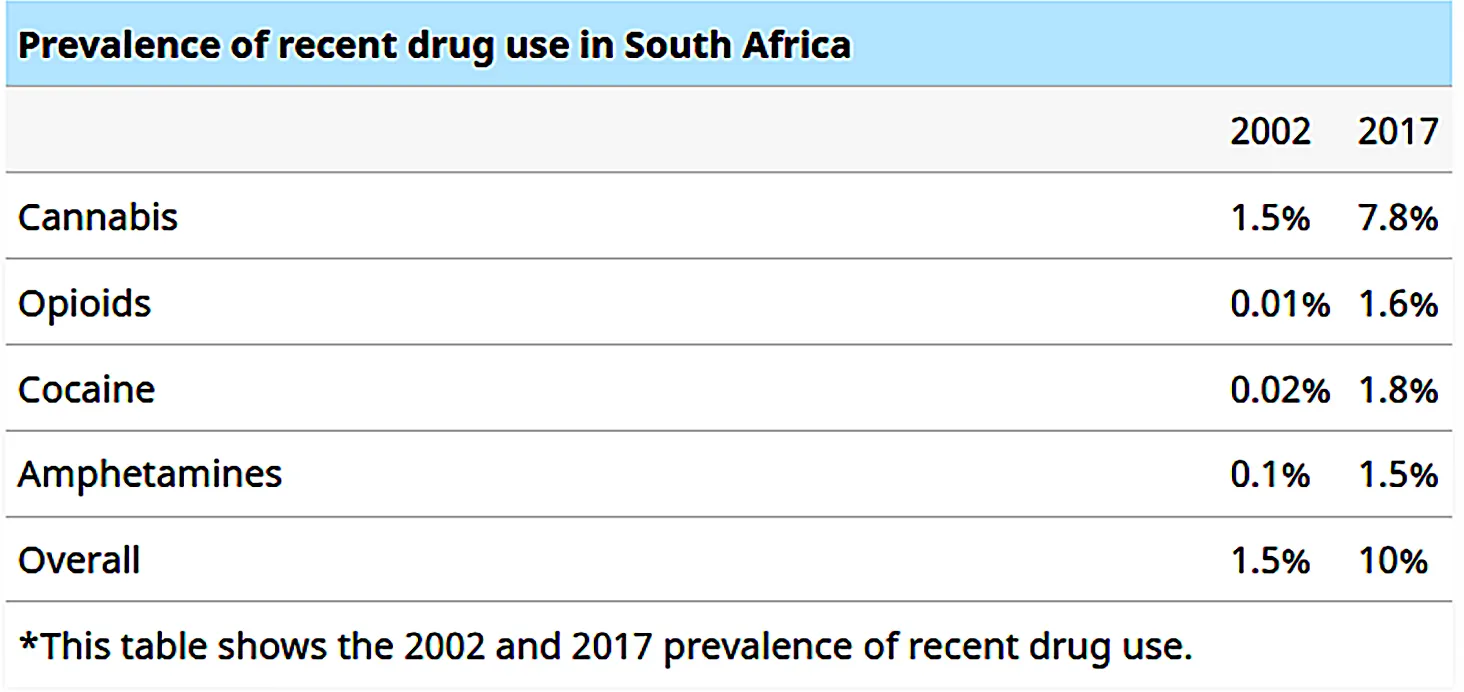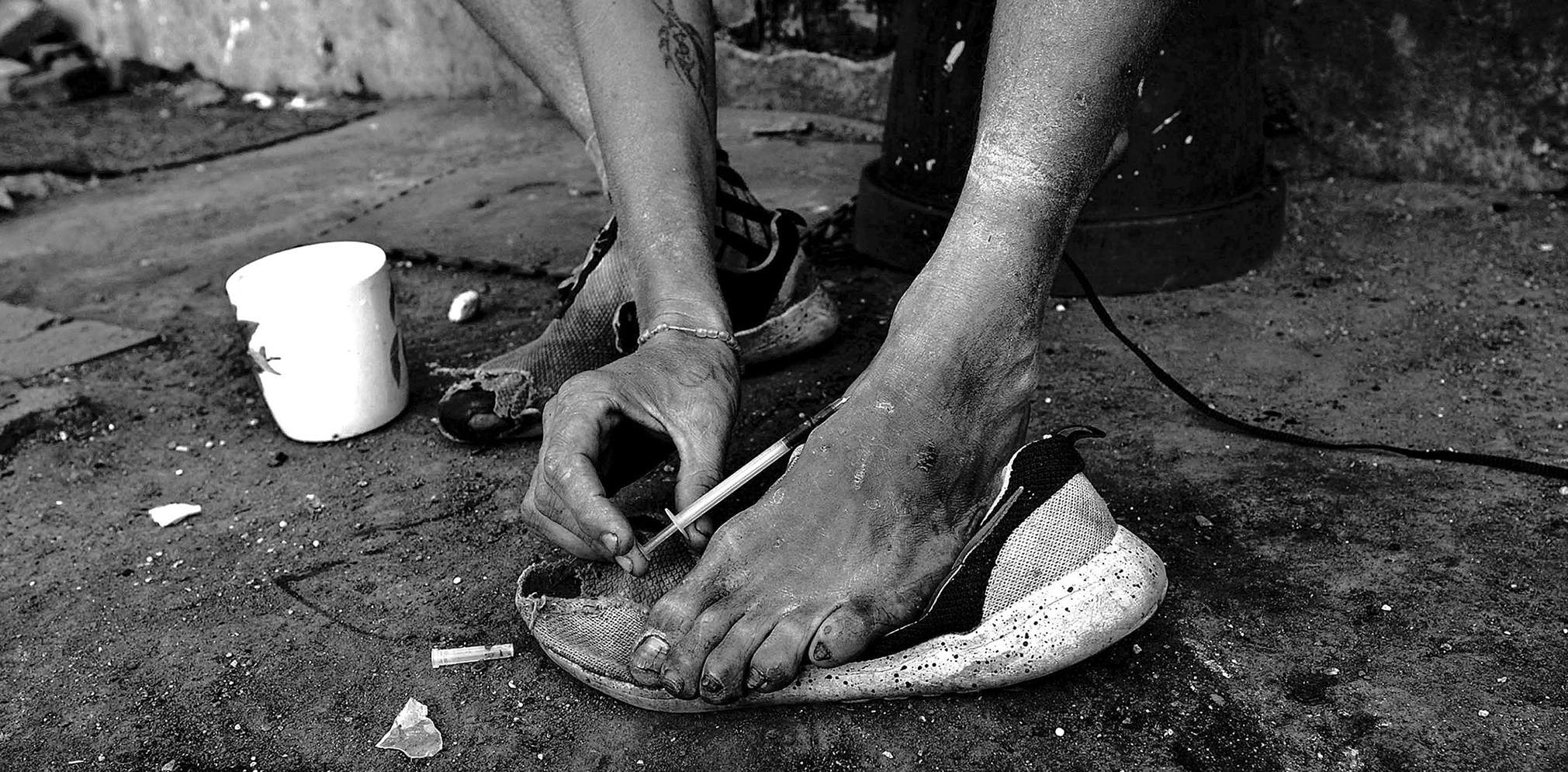SPOTLIGHT
Drug use in South Africa surged over past two decades: study

The proportion of South Africans using marijuana, cocaine and heroin has increased substantially since the early 2000s, research shows. Spotlight breaks down the reasons for these trends and potential solutions.
In 2002, fewer than 2% of people surveyed in South Africa said they had taken illicit drugs, such as marijuana, cocaine, amphetamines, inhalants, sedatives, hallucinogens and opioids, in the past three months. By 2017, this figure had climbed to 10%. This is according to a new study published in the International Journal of Drug Policy, which also finds that people who had recently used drugs were less likely to have tested for HIV.
Marijuana, which was only decriminalised after the surveys in 2018 (the last round of surveys covered in the new study), makes up the bulk of illicit drug consumption in the country, but harder substances have been on the up as well. In 2017, the share of surveyed people in South Africa who said they had recently used cocaine or crack-cocaine was 88 times higher than in 2002, while there was a 161-fold increase in the percentage who said they had recently used opioids (a class of drugs which includes heroin and pain-relief medicines like codeine).

Table on Drug Prevalence in South Africa. (Image: Supplied / Spotlight)
While the trends are ubiquitous across race and class, the study finds that people from Cape coloured backgrounds have been hardest hit by the country’s drug surge. Being young (between 25 and 34) and male is also more strongly associated with substance use, while urban areas are more affected than rural places.
Although the study didn’t find a link between drug use and HIV status, it did show that users weren’t being diagnosed as frequently as others. This may hinder the country’s ability to reach the current 2025 UN targets, one of which is that 95% of people living with HIV know their status (though at an estimated 94% the country isn’t far off).
Can we trust the findings?
The study’s conclusions are drawn from household surveys conducted by the Human Sciences Research Council (HSRC). In 2002, staff trained by the HSRC went door to door and interviewed thousands of residents across South Africa using structured questionnaires.
The same survey was completed again in 2005, 2008, 2012 and 2017, ultimately reaching more than 89,000 people. In each round, the sample was designed to be representative of the population, meaning that the results for drug use are likely to reflect national trends (at least roughly).
As the authors of the paper note, however, the research also contained limitations.
One issue is that in most years surveyors asked respondents to exclude any prescription medicines that they had recently taken so that researchers could look at the trends in illicit drug use only, but in 2017 surveyors failed to do this. One might thus suspect that the increase in substance use is artificially inflated by adding people who were simply taking prescription medicines.
But the researchers found that this didn’t significantly affect the overall trends, since the vast majority of people who reported recently using drugs were taking substances that could not be prescribed, such as marijuana and cocaine.
The survey error might have artificially inflated the uptick in the use of specific drugs like opioids (since this class of drug includes a range of prescription-based pain medicines). However, there are still lots of reasons to think that opioid abuse has indeed gone up. For one, if we ignore the problematic 2017 survey and just look at 2002 to 2012 (when prescription drugs were excluded), there is still a clear upward trajectory in opioid use.
And other kinds of data suggest that this trend continued after 2012.
For instance, a study by scientists at the South African Medical Research Council (SAMRC) found that between 2012 and 2017 an increasing share of people who were coming to rehab centres were there because of opioid addiction, particularly to heroin.
Additionally, the annual number of South African Police Service cases involving heroin rose steadily between 2002 and 2018.

A drug addict injects heroin in Vrededorp, Johannesburg. (Photo: Joyrene Kramer)
What’s driving the trend?
Researchers who spoke to Spotlight offered several explanations for the country’s growing substance problem. The first has to do with international supply.
Kennedy Mutai, the lead author of the new paper, explains that “there has been an increase in drugs that are being trafficked through the borders of South Africa, and with that increase in trafficking there’s an increase in availability… and, of course, the price is going down slightly, making it affordable”.
Smuggling has in turn been driven by different factors. Following the end of apartheid, sanctions on South Africa were lifted, allowing for increased international trade, and thus a greater flow of contraband.
“Whenever a country embraces a new regime and becomes more open, you’re going to get more porous borders, it cannot be prevented,” says Shaun Shelly, a drug policy and systems consultant. “You’re going to get drugs transiting through, and some of those transit drugs are going to end up here.”
This has been compounded over time by a shift in international heroin smuggling routes that make greater use of South Africa, where corruption is endemic at certain points of entry, according to a 2018 research paper by Enact.
A report by the Global Initiative against Transnational Organised Crime shows that heroin was traditionally transported on land from Afghanistan to Europe via Iran and Turkey. But security obstacles and greater policing have forced smugglers to increasingly switch to the “southern route” in which drugs are instead shipped from Pakistan to eastern and southern Africa, before being sent primarily to Europe.
This in turn boosted local heroin markets in the transit countries, including South Africa, because local drug dealers began buying and stealing from transit traders – while in other cases, local drivers and fishers who were involved in the trade would be paid with drugs.
Supply is just one part of the story, however.
“Just the availability of cheap drugs is not going to drive people to use drugs,” says Shelly, who argues that illicit substances often serve as a physical and emotional painkiller for people lacking meaning and purpose.
Mutai and his co-authors note that it is likely that South Africa’s sustained unemployment and poverty play a role in boosting demand for narcotics. Indeed, their study showed that unemployed people were more likely to have used drugs than those with work. They also argue that the country’s “suboptimal” implementation of its own drug prevention policies has prevented it from tackling the problem.
What should be done?
According to Professor Charles Parry, who heads the SAMRC unit dedicated to substance use, South Africa needs “balanced strategies”, which employ “law enforcement focusing on higher-level dealers” as well as treatment and harm-reduction measures (strategies that reduce the harms of drugs without full abstinence).
The country’s National Drug Master Plan 2019-2024, released by the Department of Social Development, largely includes these measures, says Parry, but he argues that the Central Drug Authority, which is tasked with implementing the plan, needs to be given “more powers and resources”.
Mutai agrees, arguing that the master plan is a “great document” but remains underfunded.
One example is the master plan’s largely underused recommendation to roll out opioid substitution therapy (OST), where a person who is dependent on opioids like heroin can replace these illicit substances with medically prescribed opioids such as methadone or buprenorphine, which are far less harmful.
When OST is offered over a long period (typically more than six months) it is referred to as maintenance therapy. This is often done as part of a holistic programme that includes counselling.
A review of 11 randomised controlled trials found that using methadone for maintenance therapy was significantly more effective at helping people to stop using heroin than non-medical interventions such as drug-free rehab programmes.
As such, South Africa’s National Drug Master Plan states that “OST is an evidence-based intervention for individuals who are opiate dependent”.
Presently, however, South Africa’s public health system only offers methadone to people who have been admitted to hospital for opioid withdrawal. In these cases, the treatment is given to patients for up to 10 days. It is not offered as part of a longer-term programme, even though the United Nations notes that OST is “most effective as a maintenance therapy”. DM
This article was published by Spotlight – health journalism in the public interest. Sign up to the Spotlight newsletter.





















 Become an Insider
Become an Insider
Comments - Please login in order to comment.